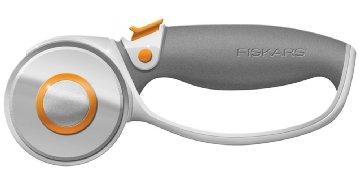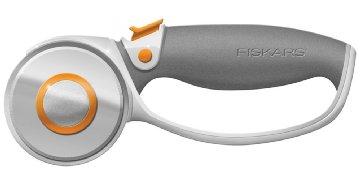-
Posts
5,928 -
Joined
Content Type
Profiles
Forums
Events
Blogs
Gallery
Everything posted by fredk
-
sometimes ya just want to save something. try adding alcohol, eg, IPA or meths and some water. Shake and leave for a couple of days, shaking it real good every so often. If that doesn't bring it back - dump it mop & glo floor 'polish' or just a beeswax/nfo/carnauba mix
-
budget for a stitching pony or clamp
- 43 replies
-
- need help please
- need advice
-
(and 1 more)
Tagged with:
-
One less step. Get stitching chisels, sharpen and polish them and they'll make your stitching holes in thinnish leather in one job, - no marking and then carefully piercing with the stitching awl. Also, in my case, I find it hard to see where the marks are, especially on dark leather
- 43 replies
-
- need help please
- need advice
-
(and 1 more)
Tagged with:
-
1. get a couple of better knives. a. minimum of a box cutter/utility type knife and a box of blades, and b. a rotary blade knife of 45 or 60mm diameter example of a b also get a set of wing dividers
- 43 replies
-
- need help please
- need advice
-
(and 1 more)
Tagged with:
-
What about using thick(er) leather and making a 'book' of leather sheets/leaves. Sewn along one edge with the first or last having a flap sort of thing to fold over the rest of the 'pages' to keep the 'book' closed
-
y'all (except chuck) are missing the OPs question He doesn't want to buy white leather, or how to dye it white, he just wants to know how its made! afaik modern white leather is produced by using strong acids and chemicals during the tanning
-
I have several ideas on this. #1 Apply some beeswax to the snap and the leather around it. Make a coffer dam around the snap, about 1/4 inch out from it using something like bluetac. Paint on mould making latex. Put on plenty of layers of the latex to build up the thickness. When the latex is completely dry peel it away. Now you have a mould you can make copies of the snap cover. Try this out on a test piece first. Once you have the mould you can make copies of the cover for further work, eg just cast a copy in a resin material and use that on your replica, or use a copy to get a brass copy cast from
-
Use thin veg tan leather. Cut it to size for the gusset. Wet it and fold down the middle. Sew one side edge to the back panel then sew the other side edge to the front panel. If you sew it whilst its still damp / not fully dry you can then press the front and back panels towards each other and the gusset will take on the fold more permanently
-

Eyelets for lace holes
fredk replied to ScottEnglish's topic in Shoes, Boots, Sandals and Moccassins
Try Le Prevo http://www.leprevo.co.uk/eyelets.htm -
With buying scraps, or 'project sized pieces' off the likes of ebay or amazon, unless its coming from a regular type leather supplier, you are going to get someone's left over scraps. Even with a known retailer you can get rubbish sometimes, eg I once bought a couple of 'project piece' bellies from Tandy ~ I got a couple of pieces that were absolutely no use at all - they were just scrap
-
or draw-string money bags
-
The only thing I can think of is the 'whitish' is caused by a matting agent. Its become too concentrated in your bottle, as said above, thin the S-S. To be rid of what is now applied - dampen a cloth with alcohol and wipe it over the white, go gently, too vigorous and it will lift the dye as well
-
yeah, wot they say. Thats so really cute and loveable
-
In the UK we don't buy snaps by 'line #' but by diameter, and we call them 'press studs', as well as other names Le Prevo keeps different sizes http://www.leprevo.co.uk/press-studs.htm
-
excellent may you have the joy of using it many, many times
-
Springfield Leather Company sells a brass swivel knife
-

pencil set
fredk replied to chuck123wapati's topic in Purses, Wallets, Belts and Miscellaneous Pocket Items
That is quite nice I'm gonna be the n***** in the woodpile The stitching showing on the outside detracts from its niceness. That stitching could have been done to the main liner before that was sewn to the outside cover No offence meant to you, just saying a thought -
You might find them under general hardware. We call these 'cup washers'. A search on ebay brought up dozens of listings of black in aluminium but just a few in black stainless steel, eg https://www.ebay.co.uk/itm/291209680425?var=590363742440&hash=item43cd731629:g:QNQAAOSwDk5T4NP4 https://www.ebay.co.uk/itm/352975706477?var=622479167849&hash=item522efdd96d:g:yUwAAOSwjkhfuPxs
-
The 'sharp' has a straight side from bottom to top, the 'round' has a curved side from bottom to top
-
Aprons are very personal items. You may just have to draw up a pattern based on the ones you see. You can buy patterns on the like of etsy, eg https://www.etsy.com/uk/listing/900527127/leather-apron-pattern-apron-templates?ga_order=most_relevant&ga_search_type=all&ga_view_type=gallery&ga_search_query=apron+pattern&ref=sr_gallery-1-40&organic_search_click=1&pro=1 Some books have basic apron patterns. eg, afair, this book has one in it; Leatherworks : traditional craft for modern living Author: Otis Ingrams
-
add to your shopping list a rotary blade knife of 45mm or 60mm diameter. You'll not be sorry. I use one on any leather thinner than 1.6mm, or 4 oz. It really reduces that pull-out
-
I've just remembered that some years ago - maybe 20 years ago now - I saw a pair of 12th century embroidered leather gloves. Usually embroidery uses fine silk thread but these gloves I suspect used wool thread, plus they had decorative overlays sewn on. The 'embroidery' was good looking but not as fine as one would expect to find on cloth. The gloves were fancy indeed and more surprising was that they were men's gloves




